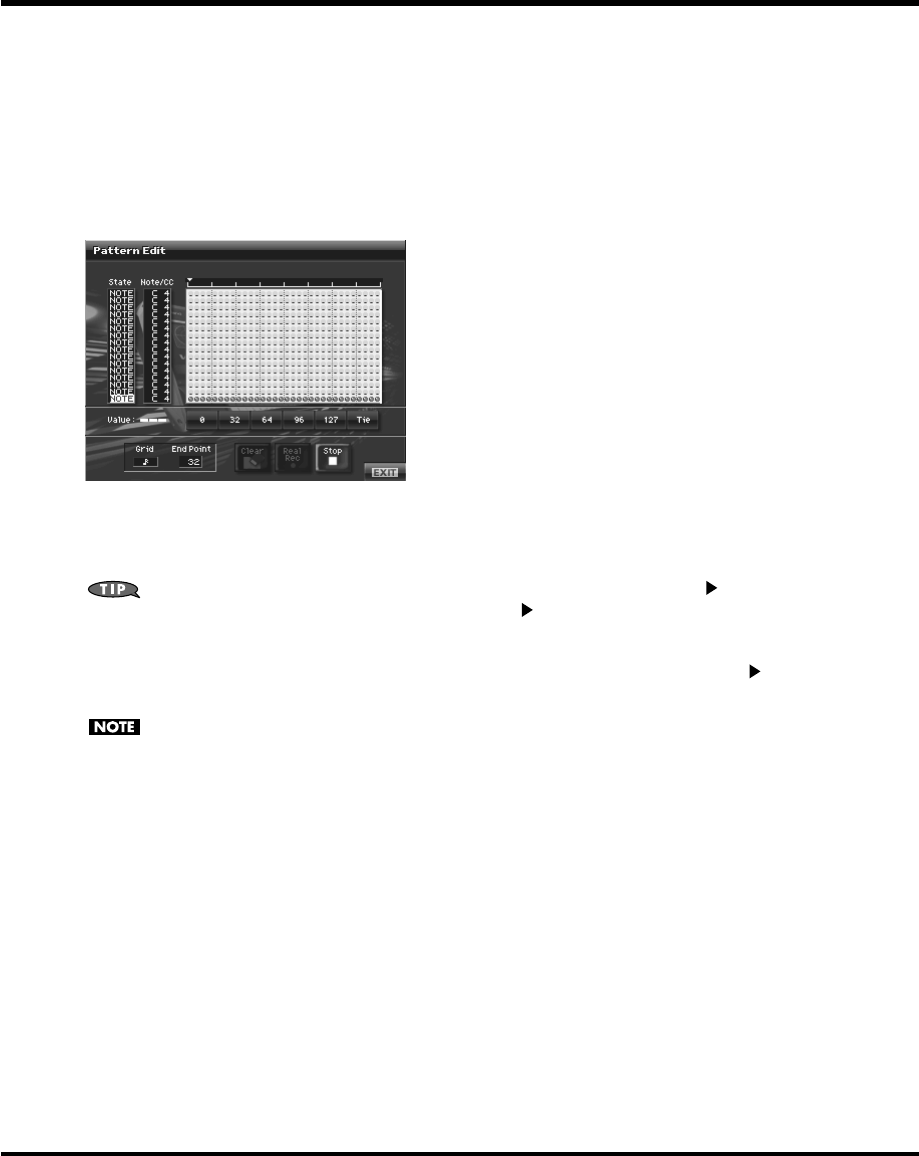
74
Patch Mode (Editing a Patch)
Creating a Pattern by Inputting One Step at a Time (Step Rec)
This method lets you create a pattern in a way similar to step-recording on a sequencer. You can record notes and
control changes by inputting them one by one.
1.
Specify the End Point of the arpeggio pattern that you want to create.
Move the cursor to the End Point value box and make the setting.
2.
Touch <Step Rec>.
The V-Synth GT will be in step-input standby mode.
fig.02-09d_50
3.
Play the V-Synth GT’s keyboard or operate a controller to input the first step.
You can repeatedly record over the pattern length (number of steps) you specified in step 1. On each pass, you
can add new notes and control changes to build up the pattern.
• To input a tie, hold down the key of the note that you want to tie and press [ ]. You will advance
as many steps as the number of times you press [ ].
• Step input records the strength (velocity) with which you press the key, and this will be reflected in
the level or dynamics of the arpeggiated notes.
• Control changes will be input with the value that was in effect when you pressed [ ].
• The notes (specified pitches) and control changes in a single pattern cannot exceed a total
maximum of 16. A newly pitched note or a control change that would exceed this total will not be
recorded.
• Be aware that if you input another note while still holding down the key for the previously input
note, these notes will be input as a chord located at the same step.
4.
When you are finished with step input, touch <Stop>.
5.
Press ARPEGGIO [ON/OFF] to turn on the arpeggiator, and play the keyboard to hear your step-recorded
pattern.
V-Synth-GT_e.book 74 ページ 2007年4月9日 月曜日 午後1時46分


















